Best Swift Programming Books to Buy in November 2025
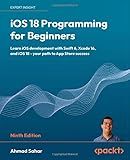
iOS 18 Programming for Beginners: Learn iOS development with Swift 6, Xcode 16, and iOS 18 - your path to App Store success


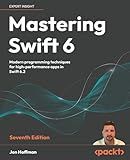
Mastering Swift 6: Modern programming techniques for high-performance apps in Swift 6.2


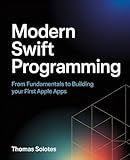
Modern Swift Programming: From Fundamentals to Building Your First Apple Apps


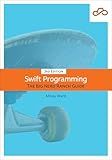
Swift Programming: The Big Nerd Ranch Guide


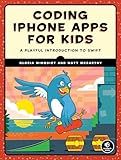
Coding iPhone Apps for Kids: A Playful Introduction to Swift


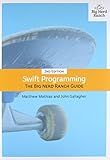
Swift Programming: The Big Nerd Ranch Guide (Big Nerd Ranch Guides)


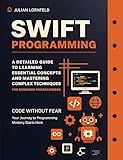
Swift Programming: A Detailed Guide to Learning Essential Concepts and Mastering Advanced Techniques


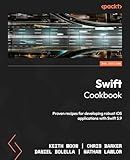
Swift Cookbook: Proven recipes for developing robust iOS applications with Swift 5.9


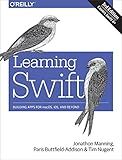
Learning Swift: Building Apps for macOS, iOS, and Beyond


In Swift, a function is a self-contained block of code that performs a specific task. To define a function, you need to follow a specific syntax. Here's the general structure:
func functionName(parameters) -> ReturnType { // Code to be executed return returnValue }
Let's break it down:
- func keyword: This is used to indicate the start of a function definition.
- functionName: This is the name you give to your function. Choose a descriptive and meaningful name.
- parameters: These are inputs that the function can accept. You can have zero or more parameters, separated by commas. Each parameter has a name followed by a colon and the parameter's data type.
- ReturnType: This is the data type of the value that the function returns. If the function doesn't return a value, you can use Void or omit the return type.
- Code to be executed: This is the block of code that performs the desired operations. It is enclosed within curly braces {}.
- return keyword: If the function is supposed to return a value, use the return keyword followed by the value to be returned.
- returnValue: This is the actual value that the function returns.
Here's an example of a function that adds two integers:
func addNumbers(a: Int, b: Int) -> Int { let sum = a + b return sum }
In this case, the function is named addNumbers, takes two parameters of type Int named a and b, computes their sum, and returns the result as an Int.
You can then call this function by providing the required arguments, like so:
let result = addNumbers(a: 5, b: 3) print(result) // Output: 8
This is just a basic example, but Swift functions can be much more complex and versatile, allowing you to handle various scenarios and perform complex tasks.
What are the different types of functions in Swift?
In Swift, there are several different types of functions:
- Global Functions: These are standalone functions that are defined outside of any class, structure, or enumeration. They can be called from anywhere in the code.
- Nested Functions: These functions are defined inside another function, and they can only be called from within that enclosing function.
- Instance Methods: These functions are defined inside a class, structure, or enumeration and are called on an instance of that type.
- Type Methods: These functions are associated with the type itself rather than an instance of the type. Type methods are declared using the static keyword for classes or the class keyword for structures and enumerations.
- Closures: Closures are self-contained blocks of code that can be assigned to variables or passed as arguments to functions. They can capture and store references to variables and constants from the surrounding context in which they are defined.
- Higher Order Functions: These functions take one or more functions as parameters or return a function. Examples include map, filter, and reduce.
- Operator Functions: These functions are used to define custom operators in Swift. Operator functions have the ability to overload existing operators or define new ones.
Note that Swift also supports function overloading, where you can define multiple functions with the same name but with different parameters.
How to write a throwing function in Swift?
To write a throwing function in Swift, you need to use the throw keyword and define the function's return type as throws. Here's an example of how to write a throwing function:
enum CustomError: Error { case invalidInput case failedOperation }
func divide(_ a: Int, by b: Int) throws -> Int { guard b != 0 else { throw CustomError.invalidInput }
guard let result = a / b else {
throw CustomError.failedOperation
}
return result
}
In the above example, the divide function takes two parameters of type Int, and it throws an error if the divisor is zero or if the division operation fails. The error is thrown using the throw keyword, and the function's return type is annotated as throws.
What is a subscript in Swift?
In Swift, a subscript is a feature that allows you to access elements, values, or members of a collection, sequence, or list by using a shortcut syntax. It is similar to accessing elements of an array or a dictionary using square brackets, but subscripts can be defined and used with custom types as well.
Subscripts in Swift can be used to provide a shortcut to access elements from a collection, like accessing an element at a particular index in an array, or to access values from a dictionary using a key.
Here is an example of a subscript defined for a custom class to access elements as if it were an array:
class MyArray { private var elements: [Int] = []
subscript(index: Int) -> Int {
get {
return elements\[index\]
}
set(newValue) {
elements\[index\] = newValue
}
}
}
let array = MyArray() array[0] = 10 print(array[0]) // Output: 10
In the example above, the MyArray class defines a subscript that takes an index as the input parameter and returns an Int. The subscript allows you to access elements of the elements array using the index within your code, providing a more convenient and concise way of accessing the elements.
Note that subscripts can have multiple input parameters and can be defined for different types, enabling you to create custom and flexible access patterns for your own types.
What is a function signature in Swift?
A function signature, also known as a method signature, in Swift is the combination of the function's name and its parameter types. It represents the unique identifier of a specific function within a program.
The function signature excludes the function's return type, external parameter names, and internal parameter names, and focuses solely on the function name and the types of its parameters. This allows for multiple functions with the same name but different parameter types to be defined, which is called function overloading.
For example, the function signature of a method named "calculateSum" that takes two integers as parameters would be: "calculateSum(_: Int, _: Int)".
How to define a recursive function in Swift?
To define a recursive function in Swift, follow these steps:
- Start by specifying the return type of the function.
- Declare the function using the func keyword, followed by the function name and parentheses for its parameters.
- Inside the function body, include a base case that defines the terminating condition for the recursion. When this condition is met, the function stops calling itself and returns a value.
- Include recursive calls to the function within the function body. These calls should be made with modified arguments that bring the problem closer to the base case.
Here's an example of a recursive function in Swift that calculates the factorial of a number:
func factorial(_ n: Int) -> Int { if n <= 1 { return 1 } else { return n * factorial(n - 1) } }
// Example usage let result = factorial(5) print(result) // Output: 120
In the example above, the factorial function calculates the factorial of a number n. It exits with a value of 1 when n is less than or equal to 1 (base case). Otherwise, it makes a recursive call to itself with the argument n - 1, bringing the problem closer to the base case.
